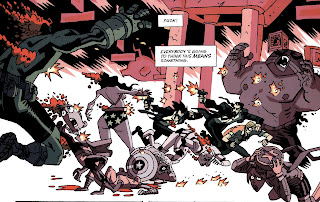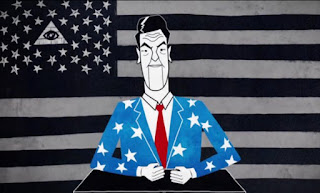God, I've never drank so much in one week...
Mini-Reviews
Captain America #1 (Marvel)
by Rick Remender, John Romita Jr., Klaus Janson, Dean White
I bet you Steve Roger's grandfather (who loved him dearly) used to call him Cap as a child too.
Uncanny X-Force #34 (Marvel)
by Rick Remender, Phil Noto, Frank Martin Jr.
.................anybody still here ????
Everything Together: Collected Stories (Picturebox)
by Sammy Harkham
After reading 'Everything Together', I have been thinking a lot about Harkham's influence outside of 'Kramers Ergot'. This collection as a whole seems to be playing around with these moments of extreme intimacy, but telling them within the confines of the horror genre. They don't always end gruesomely (some may even be described as beautiful), but a lingering sense of dread runs throughout the whole collection. It's the same feeling you get when you pick up a new Josh Simmons comic or the continuing Charles Forsman series 'The End Of The Fucking World', something terrible is always around the corner.
Hawkeye #4 (Marvel)
by Matt Fraction, Javier Pulido, Matt Hollingsworth
It is nice how Marvel tries their darnedest at first to find acceptable replacement artists and then let the train derail once they've gotten enough of your money.
.
.
.
.
.
.
Hawkeye #21 (Marvel)by Matt Fraction, Salvador Larrocca, Frank D'Armata
HAWKGUY (get it) does some CRAZY stuff with arrows and STUFF.
Walt Disney's Donald Duck, Volume 2: A Christmas For Shacktown (Fantagraphics)
by Carl Barks
Still better than every other comic I've read this week.
Prison Pit #4 (Fantagraphics)
by Johnny Ryan
Scrotal-Carnage!!!
Also, I read this last week so no conflict with the duck.
and now a guest spot from our very own Alec Berry in....
A VERY BERRY PIE
Shawn asked me to contribute to his column this week. The invitation was received via Twitter. Elegantly, it read:
Long story short, here I am, writing something on anything for his bullshit column. It seems appropriate since he used to do the same thing for me back when I had a column. The glory days!
Anyway, that’s why I’m here. Hope that’s cool, cool kids. Read on and forget. That’s what you’re good at.
alec reads comics
Haunt #26-27 (Image)
by Joe Casey, Nathan Fox, Ivan Plascencia
I had high hopes for this book, but those hopes have only been answered by stalled momentum. Joe Casey and Nathan Fox are trying (no doubt about that). Each of them coming back to this damned-from-the-start-project month in and month out says it all, but it’s sad to see their effort continually plagued and stuffed by the curse of this title.
These two issues specifically hone in on the internal conflict gripping the Kilgore brothers. Much a part of this book from the start, Casey writes the personal exorcism with a hint of sarcasm, using his stand-in Still Harvey Tubman to comment on the predictable nature of the whole thing. These are the few moments of brillance, and they echo that
Casey charm we all read his work for, but even though he’s aware of the
pointlessness of this internal drama, it’s still written and humored across two
whole issues all in order to shove the details of this “important” drip of
continutity down the throats of fans and fill their stomachs.
I want Casey and Fox to say fuck everything that’s come before and just write their 'Haunt' comic, and I feel they’re trying to get there. But eight issues have transpired, and I’m beginning to suspect Todd McFarlane and Co. are too concerned with appeasing those usual laws of IP storytelling: keep the characters consistent for the reader and for the Hollywood scouts. This train’s barely budged.
Visually, its a disgusting mess, but sort of in a good way. Although, I’ll finally agree with Chad Nevett on the topic of the colorist (a Mr. Ivan Plascencia of the Kirkman school) who mucks Fox’s line far beyond the necessary muck and detriments some needed clarity for story purposes.
I think I’m finally out. I’ll catch up with Casey at Dark Horse.
I also wrote this on the title a while back *wink* *wink*.
The Hive (Pantheon)
by Charles Burns
People love Charles Burns and this review will further sing his praise, but I did not necessarily walk away from this comic affected, changed or even very energized. 'The Hive' is a good comic; it’s just more successful for its craft and execution than it is for it's story, core themes, or attitude. That’s certainly respectable, but unless you have never experienced a story about slackers, first love or disenfranchised youth, Burns’ new book will mirror familiar territory without much of the usual spunk. That said, Burns can still turn moments of this tale into visceral sensations through use of some slightly disturbing imagery, and his fusion of the plot to colorful dreamscapes lend the overall package an extra twist.
What’s most appreciable, though, is the structure of the plot and the order in which Burns chooses to unravel things. The non-linear through line forces you to engage with the work, and as a result the picture comes together much like a puzzle, placing you in the head-space of the protagonist Doug. Burns also uses page composition effectively, most notably by splicing dream with “reality” by inserting small, vertical panels of solid color. I also like the nod to John Romita Sr.'s romance comics.
'The Hive' will no doubt top some Best Of lists this year. It might deserve to. It’s a solid comic book, and it’s from a contemporary cartoonist of a certain stature. That said, I sort of get where Sean Witzke was coming from.
Powers #11 (Icon/Marvel)
by Brian Michael Bendis, Michael Avon Oeming, Nick Filardi
I feel I would really enjoy and invest in this comic book and its story if it managed to come out more than twice a year, and even then 'Orc Stain' does the same and I still gush of its fire. Bendis and Oeming have a payoff issue at hand here, but the payoff feels thin by virtue of lapsed memory. It’s solid craft wise (probably one of the better written Bendis books I’ve read recently) and the pacing really works, but the gut punch is missing. That is partly due to the delay, but also due to the rush through the destruction. A tidal wave engulfs a city in this issue, yet it’s all over in the turn of a few pages and Walker cleans it away in a deus-ex-machina fashion. It is very Bendis, that way, moving right away from the payoff and on to the next big thing. Don’t worry though, 'Powers: Bureau' gets a proper tease on the last page.
The saga continues!
--------------
we interrupt your regularly scheduled 'Thickness' piece to talk about 'Casanova' for a bit...
Casanova, Volume 3: Avaritia (Icon/Marvel)
by Matt Fraction, Gabriel Bá, Cris Peter, Dustin Harbin
'Casanova: Avaritia' is the story of lost hope and a new beginning. The story of leaving something for a while then coming back, and finding things aren't how you left them. Then after re-assessing, now you just have to burn it all down and begin anew if you ever wish to move on. It's about destruction, but ultimately change.
The line "Lets. Get. Fucked" is both a denouncement and a rallying call to move forward. Hedonism and excess always end in failure, the high ultimately comes to a tipping point, and 'Casanova' which is a book so identifiable with Jim Steranko, Ziggy Stardust, and the promise of more (MORE!) had to fall down at some point. It had to decide to grow up at some point, and Avaritia is it's mighty send off.
The first half of Avaritia (Halves are the only way to speak of these arcs, since the first two issues are a light year away from those that came before, and those that came after are likewise a light year from those that predated it) is about accepting the passing of time.
It is Fraction realizing where he is in his career.He's no longer the blogger ranting alongside Joe Casey in The Basement Tapes about the fucking man fucking up everything because now he works for the man, he wrote a company wide crossover for the man, he has a fucking pension, children, and he was fucked by the man at every step, but he let it happen because he's an adult and needs the money.
Avaritia is the work of a man who knows what has happened to him and wants to move forward, a man who wants to burn it all to the ground and piss on the ashes, but never forget where those ashes came from. The ashes of greed, of passion, of misery, and the only way to move past that is to be even more greedy; to reclaim everything. 'Casanova' once stood for everything Fraction was, it was the book that defined his career, the book that became a measure for every book he worked on since, and now he had to make it his own again.
Avaritia is greed, it's a book about ownership, and this arc is ultimately about Fraction reclaiming what was once his after wallowing in its decadence for three years and finally deciding to say fuck it all and burn the whole universe to the ground.
A spatial holocaust.
'Casanova' is as much a fuck you to the reader as a fuck you to himself. You want Steranko, he wants Steranko, but what he really needs is for you to die.
Luxuria is about the luxury of independence.
Gula is about the gluttony of reference.
Avaritia is about the greed in reclaiming ones' work.
-------------------
Gary Panter did a dinosaur sketch in my Panter art book so suck it.
Re-reading 'The End Of The Fucking World' and it is without a doubt the best monthly comic out there.
'The Furry Trap' is book of the year, even if the authoritarian Joey Aulisio wont let me put a reprint on the site's top ten. So Empire.
If the Chaykin 'Iron Man: Season One' book isn't just Chaykin telling Warren Ellis to fuck himself and writing Iron Man as a 1920's Jazz enthusiast/drunk banging flappers all day then the whole project is a waste.
Got tickets to Harmontown when it visits the greater Boston area. I am excited.
You can buy me anything off that Comics Reporter gift list and I'd be happy.
The highlight of last week was a 4 hour Skype conversation with Joey Aulisio where we rapped Vanilla Ice lyrics at each other. We are both the definition of white.
'It Was The War Of The Trenches' makes "Paths of Glory" look tempered.
No one ever sends me hate mail. Someone should send me hate mail. It would make my life complete. Please!!! Everyone else seems to get it!!!




















